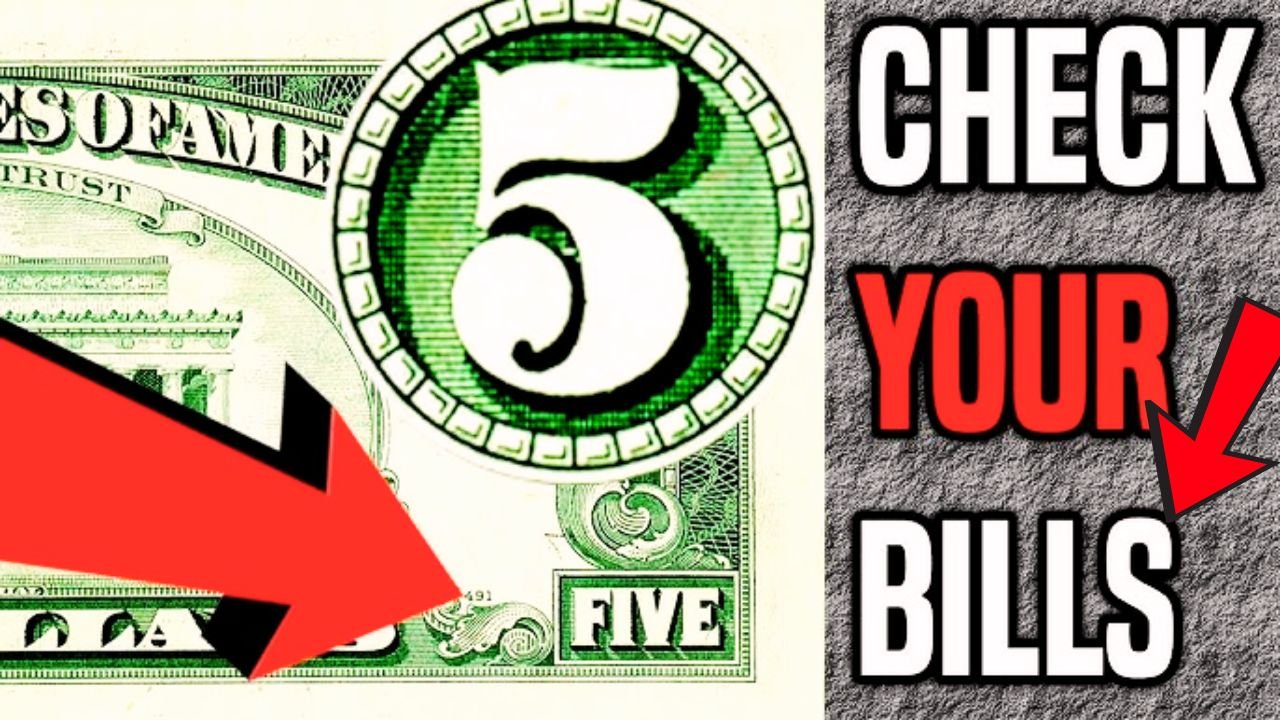Some spare change or old bills tucked away in a drawer could be worth way more than you think. In 2025, collectors are buzzing about specific state quarters from five U.S. states and rare 1953 Red Seal $5 bills. These items, which might look like regular money, can fetch thousands or even millions at auctions. Whether it’s a quarter from your home state or a bill passed down from a relative, knowing what to look for could turn pocket change into a big payday. Here’s a guide to spotting these valuable treasures.
State Quarters That Could Change Your Life
Between 1999 and 2008, the U.S. Mint released the 50 State Quarters Program, with each state getting its own unique design. Some of these quarters, especially from five states, are now worth a lot because of rare errors or low production numbers. The states to watch are Wisconsin, Delaware, Minnesota, New Mexico, and Kansas. For example, the 2004-D Wisconsin quarter with an extra leaf on the corn husk can sell for up to $1,500 in top condition. The 1999-P Delaware quarter with a “Spitting Horse” error, where it looks like the horse is spitting, can go for $500 or more.
Quarters from Minnesota with a doubled die error, where the design appears doubled, can fetch $300 to $800. New Mexico’s 2008-P quarter with a die crack error is valued at around $200, while Kansas quarters with an “In God We Rust” error, caused by a grease-filled die, can sell for $100 to $400. Check your quarters for these specific errors, especially if they’re in great shape with no wear. Uncirculated coins are worth the most, so don’t clean them, as that can lower their value.
| State | Quarter Error | Estimated Value |
|---|---|---|
| Wisconsin | Extra Leaf (2004-D) | Up to $1,500 |
| Delaware | Spitting Horse (1999-P) | $500+ |
| Minnesota | Doubled Die (2005-P) | $300-$800 |
| New Mexico | Die Crack (2008-P) | ~$200 |
| Kansas | In God We Rust (2005-P) | $100-$400 |
1953 Red Seal $5 Bills: A Hidden Goldmine
Old $5 bills with a red seal from 1953 are another hot item for collectors in 2025. These bills, known as United States Notes, have a bright red seal and serial number, unlike the green seals on modern bills. What makes some of them so valuable? It’s all about the serial number and condition. Bills with low serial numbers, like A00000001A to A00000099A, can sell for $50,000 to over $100,000 at auction. Star notes, which have a star symbol in the serial number, are also rare and can be worth $1,500 or more.
To spot a valuable 1953 Red Seal $5 bill, check the serial number on the right side. Look for numbers starting with lots of zeros or a star symbol. The bill’s condition is key—crisp, unfolded bills are worth more. Don’t try to iron or clean them, as this can hurt their value. Also, look for the series year (1953, 1953A, 1953B, or 1953C) near Abraham Lincoln’s portrait. If you think you have a rare bill, contact a professional appraiser or check sites like oldcurrencyvalues.com for guidance.
| Feature | What to Look For | Potential Value |
|---|---|---|
| Serial Number | Low (e.g., A00000001A) | $50,000-$100,000+ |
| Star Note | Star symbol in serial | $1,500+ |
| Condition | Crisp, uncirculated | Higher value |
How to Cash In on Your Finds
If you find a rare quarter or 1953 Red Seal $5 bill, don’t spend it. Start by researching its value online or with a coin dealer. For quarters, check the mint mark (P or D) and look for the specific errors mentioned. For bills, note the serial number and series year. Professional grading services like PCGS or PMG can certify the condition, making your item more appealing to buyers. You can sell through coin shops, online platforms like eBay, or auction houses like Heritage Auctions.
Why These Items Are So Valuable
The value of these quarters and bills comes from their rarity and collector demand. Errors like extra leaves or doubled dies happened during minting, making those coins one-of-a-kind. Low serial numbers and star notes for the 1953 bills are scarce because they were either saved by officials or printed in small batches. With collectors eager to own a piece of U.S. history, prices keep climbing. In 2025, these treasures are easier to find than you might think—check your change, old wallets, or family heirlooms. You could be holding a fortune.
